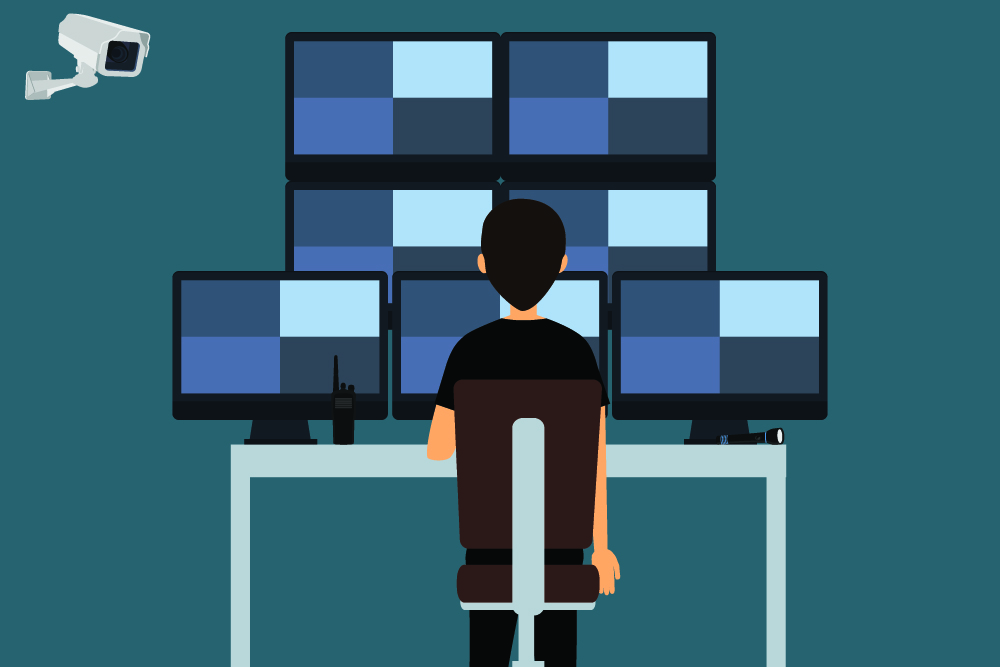The coronavirus pandemic is redefining business agility, requiring companies to adapt their workforce to remain competitive. Specifically, this means that everyone—from the majority of small business owners to many of the biggest tech companies—is preparing to accommodate a hybrid workforce, including on-site, remote, and distributed employees, for the foreseeable future.

In this environment, companies are increasingly turning to employee monitoring software to oversee their teams. This software provides critical insights into employee engagement, workflow optimizations, mitigation of insider threats, and compliance-readiness support. In an increasingly digital-first work environment, it’s the go-to analytics tool.
Although this software isn’t new, it’s receiving renewed scrutiny during the pandemic. Some workers pejoratively described it as “tattleware,” seeing employee monitoring software as a privacy invasion that erodes trust and invokes a difficult-to-define “creepy” factor, especially when deployed inside their homes.
As a result, managers and HR professionals have a responsibility to engage employees on this issue, ensuring they are prepared to capitalize on this ubiquitous technology without compromising culture or otherwise harming business outcomes.
To support these efforts, here are four best practices for deploying employee monitoring as a new software solution or as a reprioritized feature that can help organizations of all sizes adequately meet the moment.
#1 Be Transparent
While it may be tempting to monitor employees’ digital activities secretly, it’s generally considered a best practice to be transparent about your oversight initiatives.
This is especially true when companies prioritize employee satisfaction, recognizing it as a critical component of a productive and innovative organization. According to Gartner, the majority of employees are comfortable with employee monitoring software if companies are transparent about why and how they’re providing oversight.
To achieve this, companies need to identify their purpose for monitoring, which might include productivity assessments, data protection, regulatory compliance, internal investigative capabilities, and cybersecurity standards. Regardless of the reason, companies must be ready to communicate:
- The purpose for monitoring
- How monitoring will take place
- When it will take place
- What will be done with the collected information
Often, adopting a targeted approach to employee monitoring can maximize employee buy-in by protecting privacy and autonomy as much as possible. Before issuing a new software solution, ensure that you can clearly communicate your efforts to workers, their unions, and other representatives.
#2 Engage All Stakeholders
Effective employee monitoring programs aren’t top-down initiatives. Instead, they are collaborative endeavors that engage all stakeholders.
By giving workers a seat at the table, employers can help mitigate the stress and anxiety that often accompany new or renewed monitoring. Imprecise, expansive, and noncollaborative monitoring can leave workers “incredibly stressed out,” as one employee told The Washington Post.
Employee engagement in this process can be a part of a holistic effort to prioritize workers—something that is uniquely important to Millennials. According to the 2019 Deloitte Global Millennial Survey, 55% plan to leave companies that prioritize profits over people—something that certainly extends to an excessive emphasis on productivity and other ephemeral metrics.
#3 Prioritize Particular Data Collection
When applied to specific monitoring priorities, this software can be incredibly precise, allowing companies to be data-driven and insight-oriented without compromising employee privacy or dampening morale.
Specifically, this means:
- Making monitoring information a “need-to-know” data set that serves a specific purpose
- Limiting the scope and subject of monitoring, including restricting monitoring to particular locations, applications, or tasks
- Deploying auto-redaction and other privacy-first features that prioritize anonymity
This approach similarly benefits companies inundated with a deluge of data that can quickly overwhelm HR personnel, lessening the benefits of monitoring in the first place.
#4 Consider Compliance
When it comes to employee monitoring, compliance is a two-sided coin. On the one hand, employees don’t lose their privacy rights when they go to work, so companies need to consider regulatory compliance when deploying employee monitoring software.
Fortunately, the above best practices are privacy-friendly, making compliance a simpler, more intuitive process.
Of course, a hybrid workforce also comes with many data privacy pitfalls. Deploy employee monitoring software as a training tool that helps positively impact data-handling practices, phishing scam prevention readiness, and other applicable compliance standards that require continuing education.
Bottom Line
As companies transition to a hybrid workforce that includes on-site, remote, and distributed teams, providing oversight and attaining meaningful insights are critical to their success.
Employee monitoring software is a capable and comprehensive solution, but its implementation is as important as its adoption. Embracing these best practices can serve as a tool that empowers HR departments when it matters most.

Isaac Kohen is VP of research and development at Teramind, a global provider of employee monitoring, data loss prevention (DLP), and workplace productivity solutions. Follow the company on Twitter: @teramindco.
